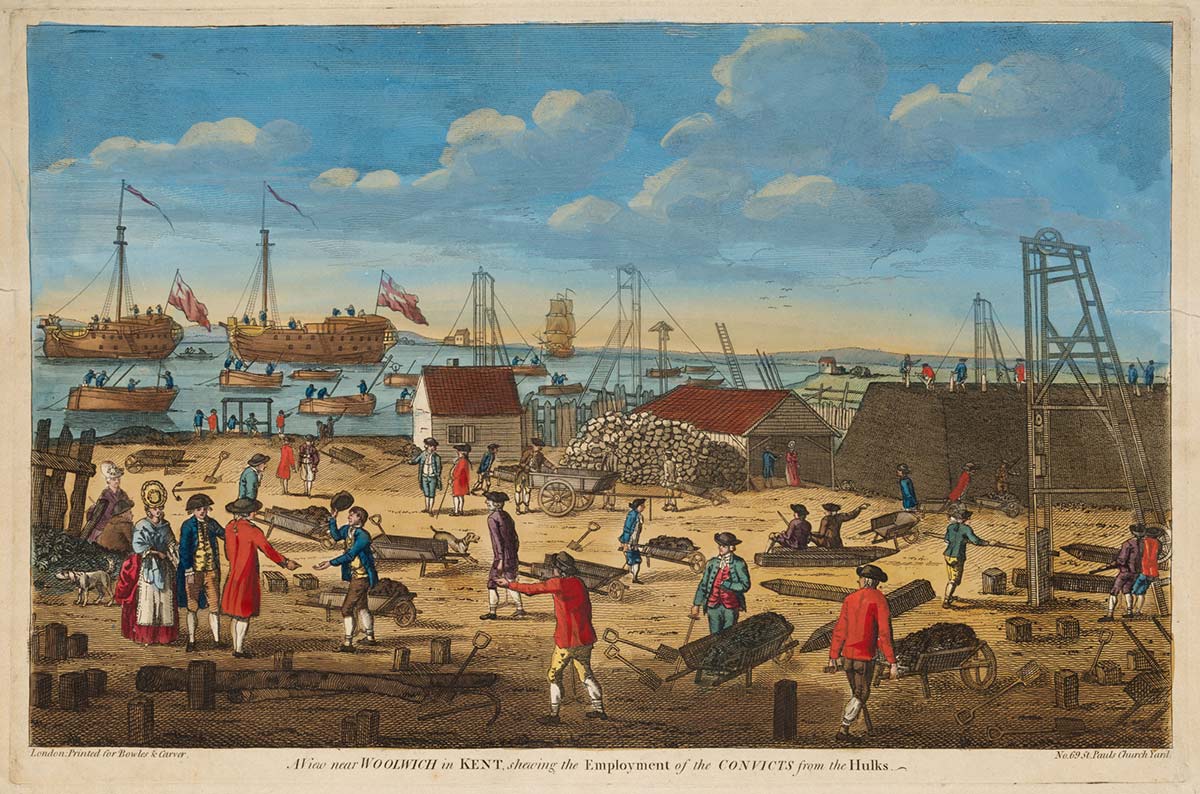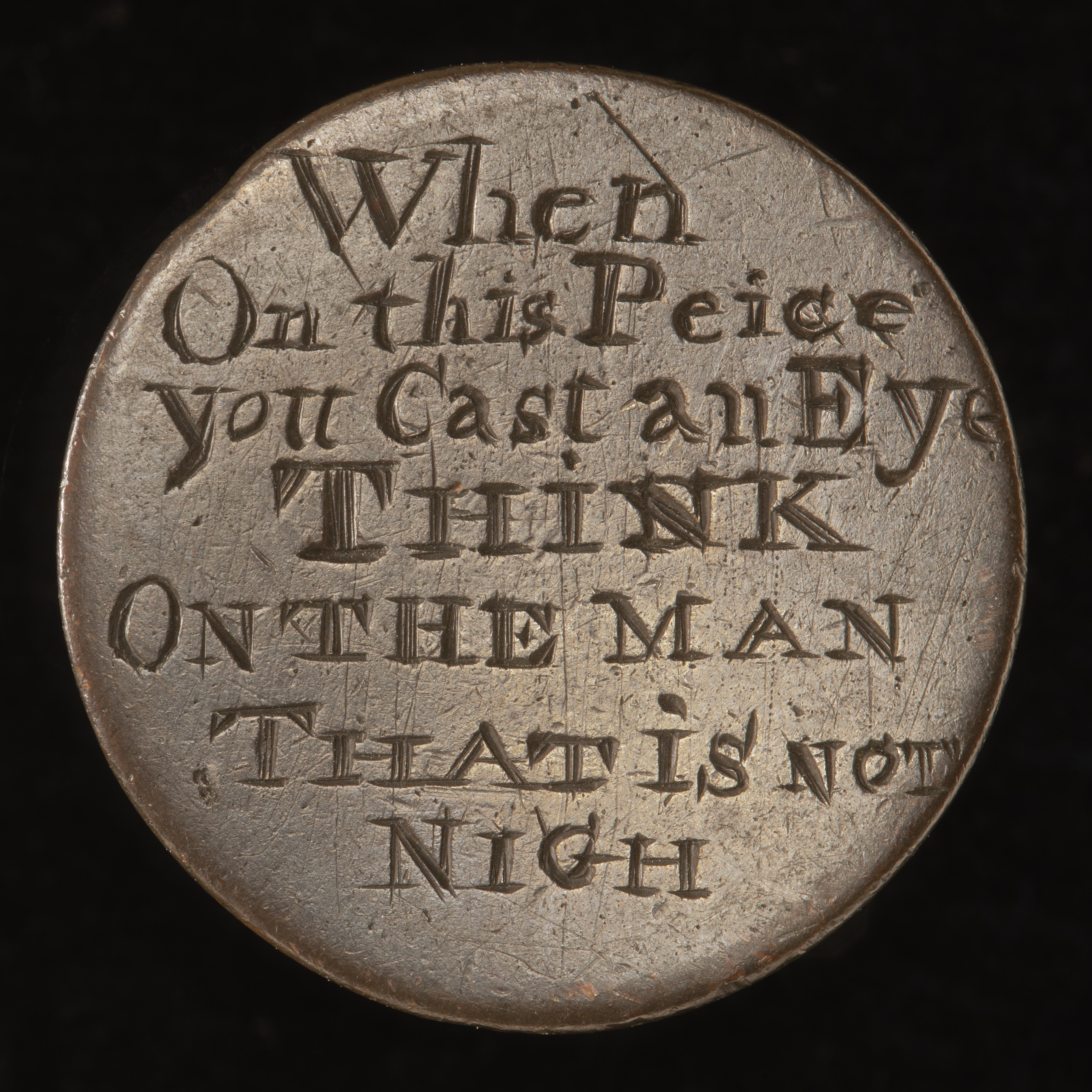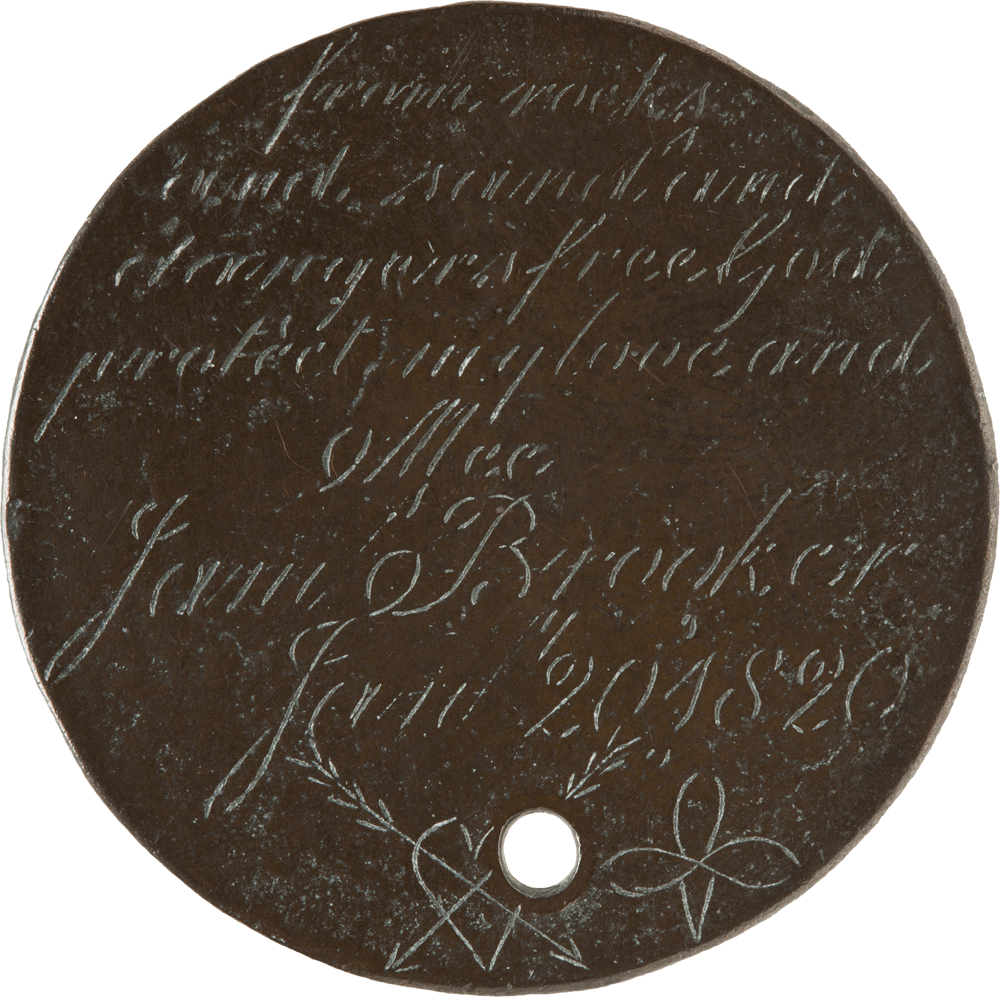Convict tokens
These tokens were made by convicts who were waiting to be transported from England to Australia. They were given to friends and family as keepsakes. Also known as ‘leaden hearts’, these tokens were made by smoothing the surface of a coin and engraving it with messages and pictures.
The tokens in the National Museum’s collection date from 1762 to 1856.
1832 T Burbury convict token – 3D image
Diameter: 30mm, thickness: 1mm
| Front | Back |
|
Token engraved with stippled cursive text: When |
Token engraved with stippled cursive text: T. Burbury |
In 1832, at just 23 years old, Thomas Burbury, a weaver, was convicted for taking part in riots, machine-breaking and arson during a protest against the industrialisation of weaving in Coventry, England. He was transported to Van Diemen’s Land (now Tasmania) on the York. Public interest in his trial led to his wife and baby daughter joining him months later. Assigned to a landowner in Oatlands, Burbury was granted a free pardon in 1839, for his part in capturing sheep stealers and tracking down bushrangers. He began acquiring land, held roles including poundkeeper and racecourse clerk and was elected to the Oatlands municipal council. Over time, Burbury and his family became respected members of their community.
1819: T Jones / John convict token – 3D image
Diameter: 36mm, thickness: 2mm
| Front | Back |
|
Token engraved with cursive text: Dear John |
Token engraved with cursive text: T Jones |
This token may relate to Thomas Jones, a 16-year-old shoemaker who was tried at the Middlesex Gaol Delivery on 17 February 1819 for stealing a shawl from a London shop. He was sentenced to seven years’ transportation and sailed to Van Diemen’s Land (Tasmania) on the Guildford on 12 May 1820. His convict records described him as 5 feet 3½ inches (1.6 metres) tall, with dark hair and a fair to ruddy complexion.
1830: Elizabeth Catchpole convict token – 3D image
Diameter: 40mm, thickness: 4mm
| Front | Back |
|
Token with a border of stippled leaves and flowers and five lines of stippled text: TURNKEYSS |
Token with a border of stippled leaves and flowers and four lines of stippled text, ornamented with leaves and flourishes. The top and bottom lines are curved: ELIZABETH
|
Questions:
1. What does the research about Thomas Burbury tell us about life in colonial Australia?
2. Thomas Burbury worked as a labourer for a private employer, later receiving a ticket of leave and eventually a free pardon. Search the collection and find the story of another convict, Mary Ann Whitlock. How do their experiences compare?
3. What historical sources do you think were used to learn about T Jones and do you think this research is reliable?
4. Why do you think authorities recorded detailed physical descriptions of convicts?
5. What does T. Jones’s crime tell us about life in England at the time?
6. We don’t have any information about Elizabeth Catchpole, but we know that convicts sent tokens to friends and family members. Who did she send hers to? Imagine or describe the events that may have led her to create and send her token.
7. If you were a convict, about to be sent to the other side of the world, who would you create a token for? Draw some designs for the front and back of your token.
Details
+ --
Themes:
-
Type:













